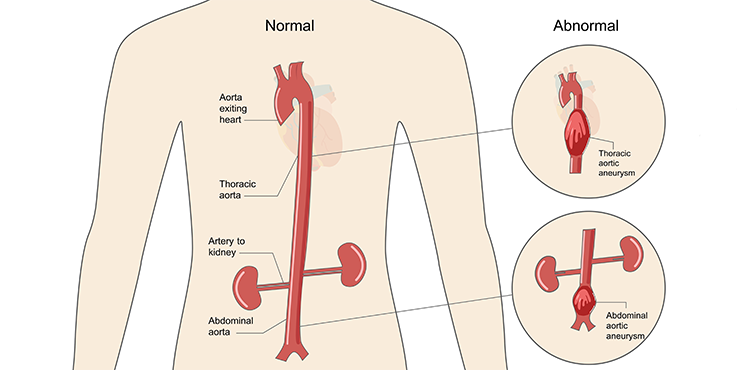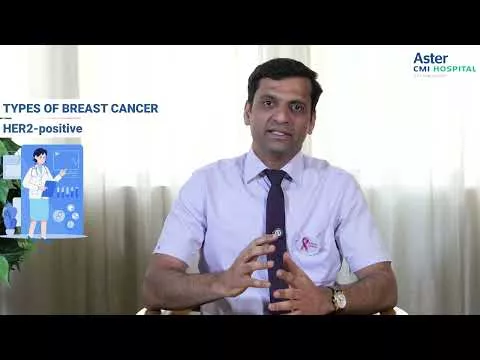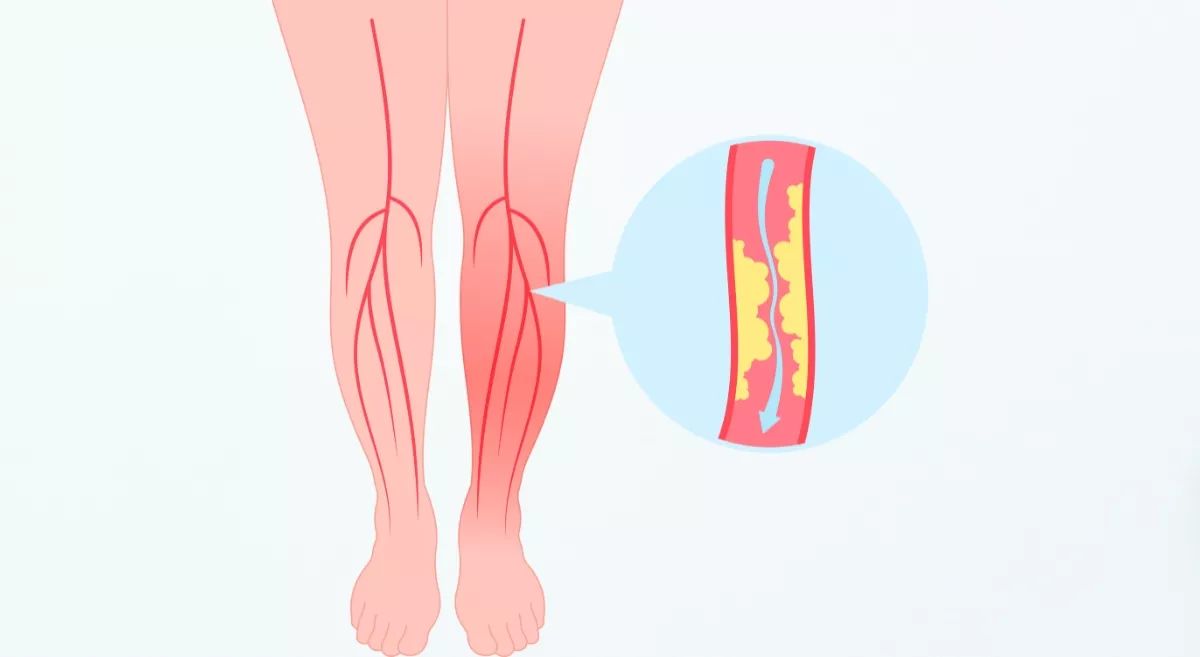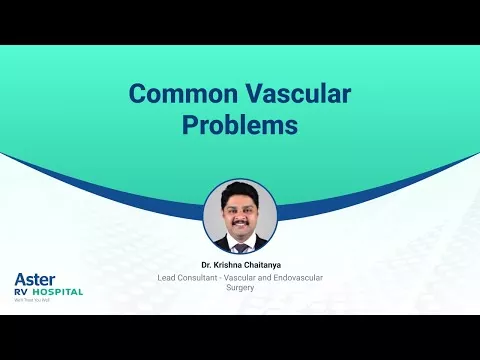Understanding Aortic aneurysm:
The aorta is the body’s main blood vessel, a strong, muscular artery that carries oxygen-rich blood from your heart to every organ and tissue.
It’s built to handle enormous pressure, pumping continuously every second of your life. But over time, that constant stress can cause the wall of the aorta to weaken and stretch, leading to a balloon-like bulge called an aortic aneurysm.
An aortic aneurysm can occur anywhere along the length of the aorta. If left untreated, it can enlarge and eventually rupture, causing life-threatening internal bleeding, a medical emergency known as aortic dissection.
If you or someone you know has been diagnosed with an aortic aneurysm or aortic dissection , don’t panic… you’re not alone, and help is closer than you think. At Aster CMI Hospital, Bangalore, our expert vascular surgeons offer world-class aortic aneurysm diagnosis and treatment using advanced imaging and minimally invasive endovascular repair (EVAR/TEVAR) ensuring early detection, precision care, and peace of mind.
Depending on where the bulge occurs, there are two main types of aneurysms:

1. Abdominal Aortic Aneurysm (AAA):
This type occurs in the part of the aorta that runs through your abdomen. It’s the most common and often develops slowly without noticeable symptoms until it becomes large or ruptures.
2. Thoracic Aortic Aneurysm (TAA):
This occurs in the part of the aorta that runs through your chest. It’s less common but can be more serious because it’s closer to the heart and vital arteries that supply blood to the brain and upper body.
But why do they occur in first place?Causes of aortic aneurysm :
Aortic aneurysms develop when the wall of the aorta weakens, most often due to atherosclerosis, which means the buildup of fatty deposits and calcium that harden the arteries. Over time, this makes the aortic wall less elastic and more prone to damage.
Other common causes and risk factors include:
Smoking is a huge risk factor because partly it contributes to atherosclerosis and partly it directly damages the walls of the arteries.
- High blood pressure (Hypertension)
- Chronic Obstructive Pulmonary Disease (COPD)
- Males—Gender: Males are almost five times more likely to get aneurysms than females; the reason is not entirely known.
- Age is a risk factor; people over 65 years old are at an increased risk of developing an aneurysm because older people tend to have stiffer aortas.
- Genetics is also a risk factor—connective tissue disorders.
How Do We Know If We Have an Aneurysm?
Signs And Symptoms:
The tricky part about an aortic aneurysm is that it often causes no symptoms until it’s serious. About 75% of people have no warning signs until it’s found incidentally during imaging or after rupture.
But let's try to group our symptoms into two main groups.
- Symptoms associated with an intact aneurysm.
- Symptoms associated with a ruptured aneurysm.
How Do We Diagnose Aortic Aneurysm?
So we really don’t want these things happening to us… And the good news is, we don’t have to wait for them to.
The key lies in early and accurate diagnosis.
At Aster CMI Hospital, Bangalore, one of the leading centers for vascular and endovascular surgery in India, our vascular surgeons and radiologists work together to detect aneurysms before they become dangerous.
We use advanced imaging techniques such as:
- CT scans provide detailed visualization of the aneurysm’s size, shape, and position.
- MRI imaging offers a radiation-free assessment of the entire aorta, aiding in thorough evaluation and treatment planning.
- Vascular ultrasound delivers quick, non-invasive results, making it ideal for screening and follow-up care.
Every diagnostic step is guided by our experienced vascular surgeons, radiologists and cardiologists, who blend expert judgment with the latest imaging innovations.
With access to echocardiography and 3D imaging systems, we can detect even the earliest changes in the aortic wall, often before symptoms appear.
At Aster CMI Hospital, early detection isn’t just about technology… It's about giving you the confidence that your heart is in expert hands.
With a commitment to precision, compassion, and continuous innovation, we’re setting new standards in the diagnosis and management of aortic aneurysms in Bangalore and beyond.











